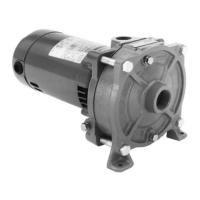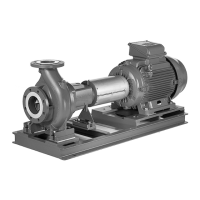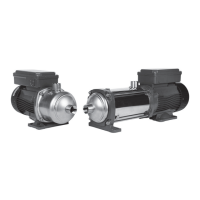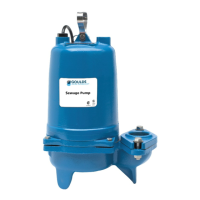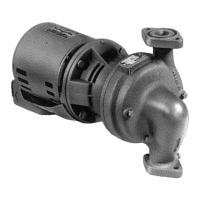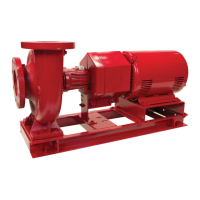7
2.0 PIPING
Notice: Most 4" submersibles have
left-hand discharge head threads,
hold the pump only at the
“discharge head” when installing
ttings or threaded pipe.
2.1 General
The pump discharge
piping should be sized for
efficient pump operation.
Use the Friction Loss Tables
to calculate total dynamic
head using different pipe
sizes. As a rule of thumb, use 1" for up
to 10 gpm, 1¼" for up to 30 gpm, 1½"
for up to 45 gpm, and 2" for up to 80
gpm. In the case of long pipe runs it is
best to increase pipe size.
Some pumps are capable of very
high discharge pressures, please
select pipe accordingly. Consult with
your pipe supplier to determine the
best type of pipe for each installation.
2.2 Pressure Tank,
Pressure Switch
and Pressure
Relief Valve
Select a dry location in
which the ambient temper-
ature is always above 34º F
(1º C) in which to install the
tank, pressure switch, and
pressure relief valve. The tank should
be located in an area where a leak will
not damage property.
The pressure switch should be
located at the tank cross tee and
never more than 4' from the tank.
Locating the switch more than 4' from
the tank will cause switch chatter.
Do not install valves, lters, or high
loss ttings between the switch and
the tank(s) as switch chatter may
result. As an example, a 1¼" spring
check valve has friction loss equal to
12' of pipe, placing the valve be-
tween the pressure switch and the
pressure tank is the same as moving
the pressure switch 12' away from the
tank. It will create switch chatter.
On multiple tank installations the
switch should be as close to the cen-
ter of the tanks as possible. Multiple
tank installations should have a mani-
fold pipe at least 1½ times the size of
the supply pipe from the pump. This
will reduce the Friction Head in the
manifold and reduce the possibility of
switch chatter.
Pressure relief valves are required on
any system that is capable of
producing 100 psi or 230' TDH. If
blow-off may damage property,
connect a drain line to the pressure
relief valve and run it to a suitable
drain.
2.3 Adjusting Tank
Pre-Charge
Insure that the tank is empty of
water. Use a high quality pressure
gauge to check the tank pre-charge
pressure. The pressure should be 2 psi
below the pump cut-in pressure. As
an example, a 30-50 psi system would
use a tank pre-charge of 28 psi.
2.4 Discharge Pipe
Note: Most discharge heads are
threaded into the casing with left-
hand threads. Hold the pump only at
the discharge head when installing
ttings. Failure to hold the discharge
head will loosen it and pump dam-
age will result on start-up.
If your pipe requires an adapter we
strongly recommend using stain-
less steel. Galvanized ttings or pipe
should never be connected directly
to a stainless steel discharge head as
galvanic corrosion may occur. Plastic
or brass pumps can use any
material for this connection. Barb type
connectors should always be double
clamped.
Hazardous pressure can
cause personal injury
or property damage.
CAUTION
Do not install tank where
it will be subjected to
spray from irrigation
systems. Exposure to such
spray could result in
corrosion of the tank,
eventually leading to an
explosion which can cause
property damage, serious
personal injury or death.
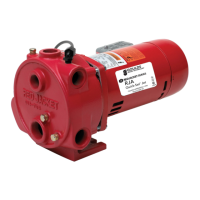
